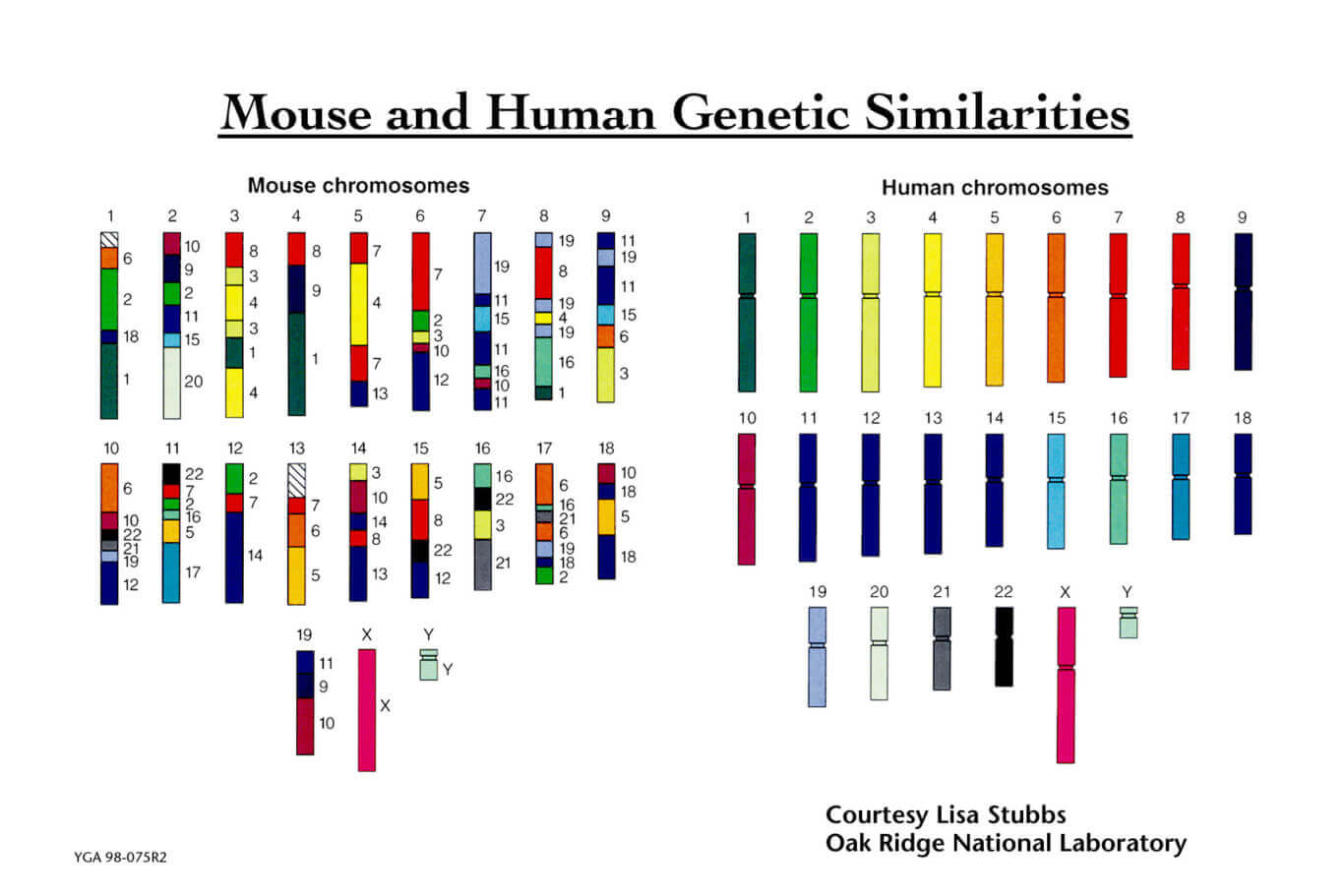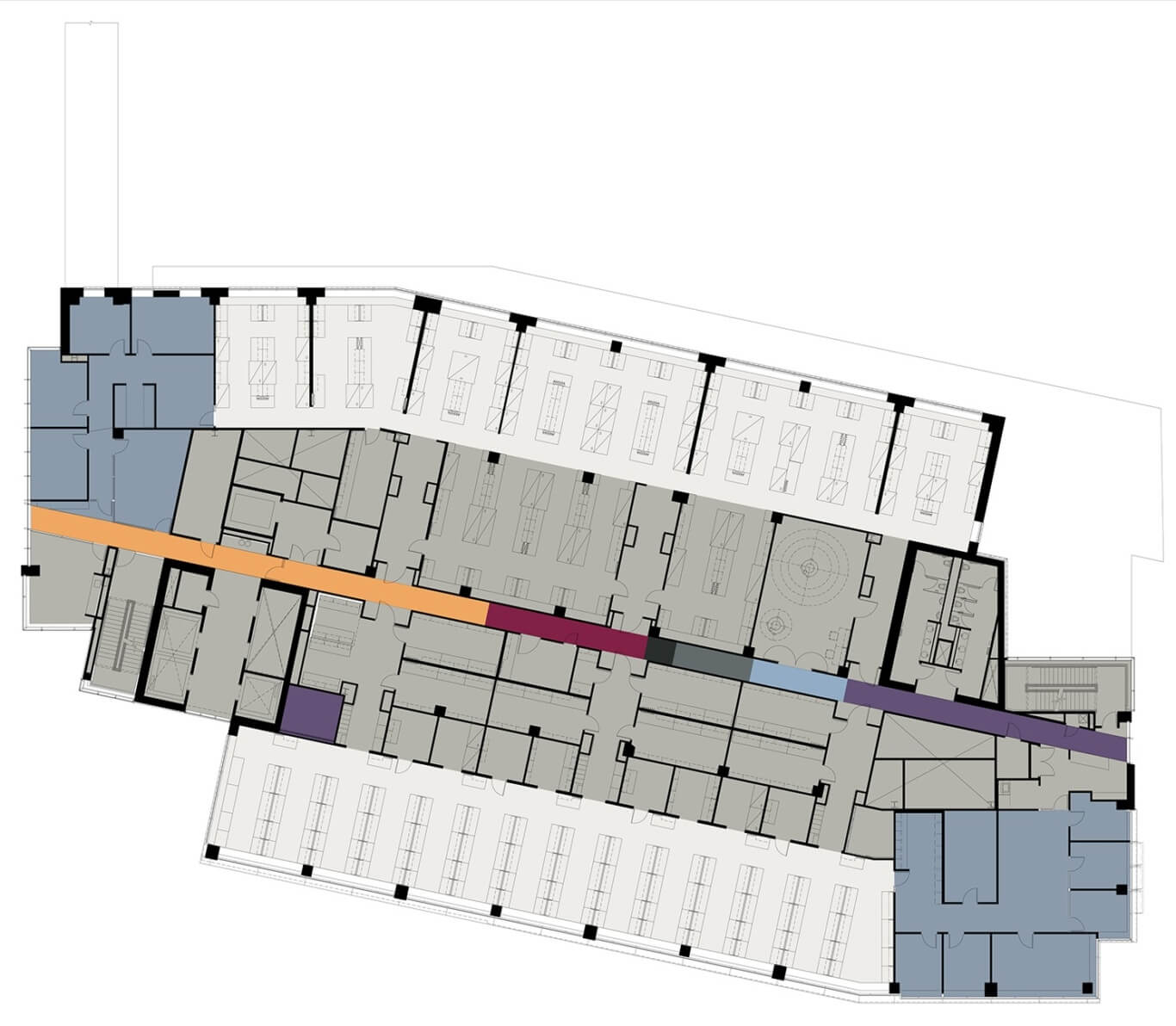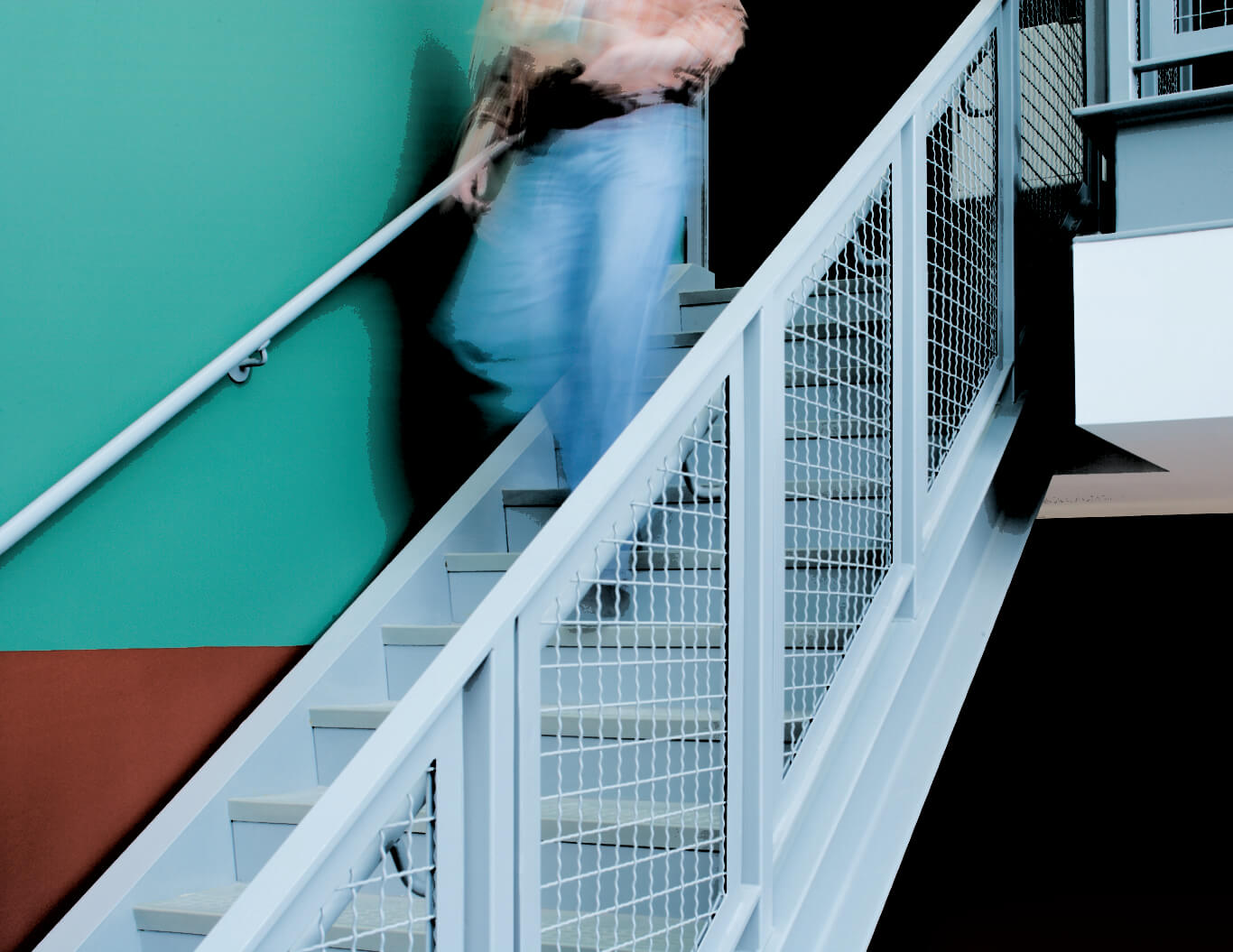The design of the University of Pittsburgh’s Biomedical Science Tower III is meant to facilitate the percolation of scientific ideas throughout the building, from the ground floor to the top level. But scientific ideas permeate BST3 right down to its very floors.
Color diagrams of mouse chromosomes mapped by researchers provided the impetus for a unique interior color strategy. By assigning sequential strands of mouse chromosomes to each floor, a different color strategy evolved for each corridor. This gave a seemingly random and surprisingly complex colorful pattern to each floor’s identity.



Level 2

Level 10
A similar approach was applied to vertical surfaces in the stairwells.


